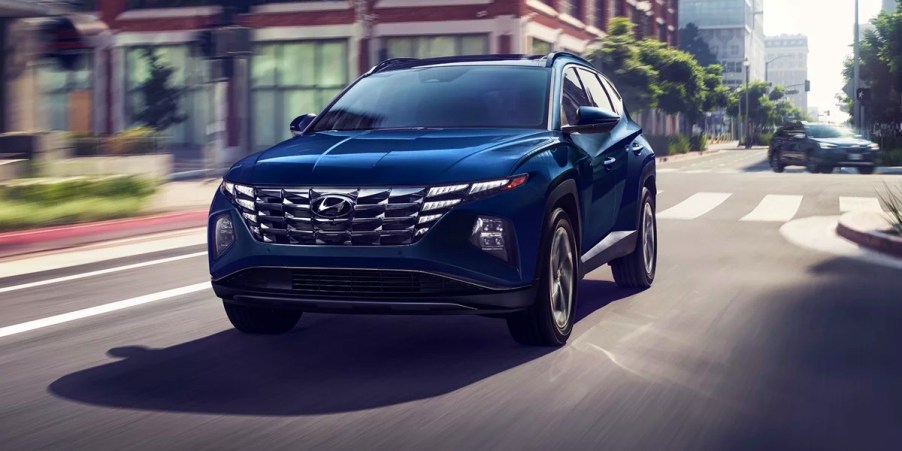
2023 Nissan Rogue vs. Hyundai Tucson: Which Compact SUV Is More Popular?
When the topic of compact SUVs comes up, most people almost immediately think of models like the Honda CR-V and Toyota RAV4. However, the Hyundai Tucson and Nissan Rogue have proved time and again to be worthy rivals in the SUV segment. The Tucson and Rogue have been going head-to-head for years, and today, we compare both vehicles to determine which one is more popular.
Year-to-date sales numbers of these compact SUV rivals
Nissan recently announced that it sold 244,353 units across the board in the second quarter of 2023, a 33.4% growth from its 183,171 units sold during the same period in 2022. Of these sales, 71,246 were sales of the Rogue model, which was an exponential growth (67.87%) from the 42,440 units the brand sold in 2022.
On the other hand, Hyundai sold 210,164 vehicles in its second quarter of 2023. This was a 14% positive growth from the 184,191 units sold in the second quarter of 2022. According to GoodCarBadCar, 54,421 were the Hyundai Tucson, 10,000 more units than those sold in 2022 and a 22.53% growth.
Nissan’s Rogue sold over 16,000 more units than Hyundai’s Tucson, taking the third sport after the RAV4 and CR-V. Examining the year-to-date sales figures, Tucson sold 118,125 units compared to 98,349 units in 2022, marking a 20.11% increase in sales.
The Rogue, on the other hand, sold 147,745 units in YTD 2023 compared to 87,675 in YTD 2022. This marks an impressive 68.51% increase in sales, a 48.39% difference in Tucson vs. Rogue YTD sales.
Tucson vs. Rogue: Performance
The Rogue is powered by a 1.5-liter three-cylinder engine that generates 201 horsepower and 225 lb-ft of torque. The turbocharged three-cylinder enables the car to go from 0 to 60 mph in 7.8 seconds, which is impressive for an SUV. The Tucson, on the other hand, is powered by a 2.5-liter four-cylinder engine that makes 187 hp and 178 lb-ft of torque.
The car takes 8.8 seconds to reach 60 mph, making it slightly slower than the Rogue. Lead-footed drivers may get more power from the hybrid and plug-in hybrid models of the Hyundai Tucson, but the Rogue in its base trim is still significantly perky.
Tucson vs. Rogue: Fuel Economy
The Rogue outshines the Tucson yet again in fuel economy. The front-wheel drive Rogue model offers 37 mph on the highway and 30 mpg, while the AWD model provides 28 mpg in the city and 34 mph on the highway. In contrast, the Tucson’s front-wheel drive model can give about 25 mpg on city roads and 32 mpg when traveling on the highway.
Upgrading to the AWD version gives the driver 23 mpg on city roads and 28 mpg on the highway. The Tucson’s hybrid version offers 35 mpg overall but costs almost $4,000 more for the base trim ($32,685) than the Rogue ($28,695).
Tucson vs. Rogue: Safety Features
The Rogue has various helpful driver assistance features that put it next to other SUVs like the RAV4. All its trim levels come with automatic emergency braking, forward collision warning, blind-spot warning, rear seatbelt reminder, and rear cross-traffic alert. Its ProPilot Assist system is standard on the Platinum trim but is an option for the SL trim.
The Tucson also has some of these standard driver assistance features, but not on all trims. Some of its key safety features include automated emergency breaking, lane departure warning, and adaptive cruise control.
Although the Rogue and Tucson are top SUVs, the Rogue is more popular despite being a tad costlier than the Tucson in its base trim.



